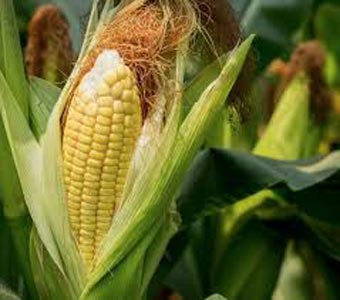
DAE eyes 1.71m tonnes of maize production in Rangpur div
Tuesday, 20 November 2018
RANGPUR, Nov 19 (BSS): The Department of Agriculture Extension (DAE) has fixed a production target of 1.71 million tonnes of maize from 0.18 million hectares of land during this Rabi season in Rangpur division.
Horticulture Specialist of the DAE at its regional office here Khondker Md Mesbahul Islam said the farmers are showing more interests in maize farming this time after getting its repeated bumper productions with fair price in recent years. "The farmers have already brought 24,500 hectares of land under maize cultivation till Sunday as sowing of its seed continues in full swing in eight districts under two agriculture regions in the division," Islam said.
"The farmers have already brought 24,500 hectares of land under maize cultivation till Sunday as sowing of its seed continues in full swing in eight districts under two agriculture regions in the division," Islam said.
Under the programme, 0.75 million tonnes of maize will be produced from 83,192 hectares of land in five districts of Rangpur agriculture region and 0.95 million tonnes of maize from 0.1 million hectares of land in three districts of Dinajpur agriculture region this season.
Deputy Director of the DAE at its Rangpur regional office Md Moniruzzaman said cultivation of maize has become popular among the farmers both in the main land and riverine char areas helping them to cut poverty and achieve self-reliance.
"Like in the previous seasons, the char people are cultivating maize on the char lands on the Brahmaputra, Teesta, Dharla, Jamuna, Dudhkumar, Kartoa, Ghaghot, Atrai and other river basins in Rangpur division this season," Moniruzzaman added.
Rangpur Regional Additional Director of the DAE Md Shah Alam said the farmers are expanding maize cultivation every year after getting huge benefits and becoming self-reliant side by side with ensuring food security in recent years.
"The government is distributing special agriculture incentives among the small and marginal farmers to increase maize production this season," Alam said predicting a bumper production of the major cereal crop.
Noted agriculture scientist Dr Md Abdul Mazid, who got the Independence Medal (food security) this year, suggested for further expanding cultivation of the low-irrigation water consuming maize crop to reduce Boro farming and save huge underground water.
"The farmers can get maximum output of maize adopting conservation agriculture technologies and using less farm-labourers and farming time to reduce farming costs in the northern region," Dr Mazid said.
He said maize is currently being used mainly as fodder of domestic animals and poultry birds though different foodstuffs could be prepared with it and consumed by changing food habit to meet nutritional demand of the population reducing pressure on rice.